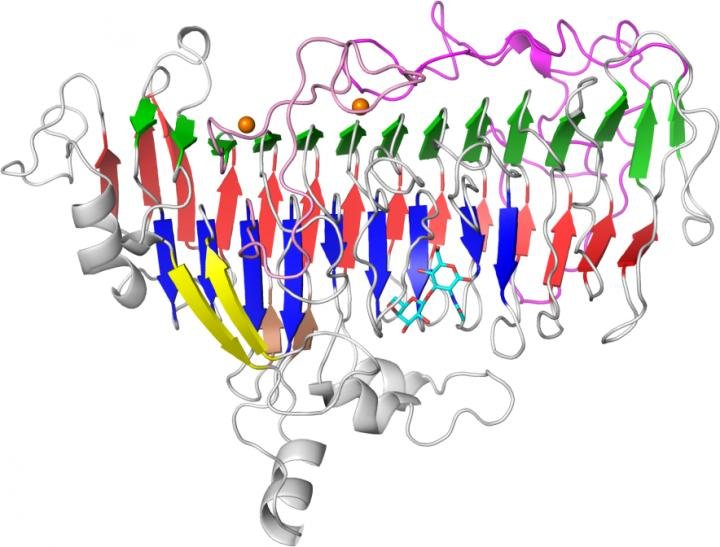Blog
The hidden gems in human milk: Human milk oligosaccharides | LATCH
Prolacta > News > The hidden gems in human milk: Human milk oligosaccharides | LATCH

Image Credit: Yamada and Gotoh Et Al.
Author: Amy Mailand Paradis
NNP Researchers, Moukarzel & Bode (2016) explored the emerging topic of human milk oligosaccharides (HMOs). HMOs found in human breast milk are becoming a hot topic to uncover the potential benefits and clinical application. HMOs are the third most prevalent component in human milk, after digestible carbohydrates and fats. These unique complex sugars are potential keys to gut maturation, prebiotics, antimicrobials, anti-adhesives and immunity modulators with over 200 different configurations currently identified.
Human milk is more than just nutrition for infants, it is a proven disease preventing strategy, especially in the care of preterm infants. Necrotizing Enterocolitis (NEC), infections, retinopathy of prematurity and cognitive delays are reduced in human milk-fed infants than in formula-fed infants. Additional data reveals immune-mediated illness such as asthma, inflammatory bowel disease, allergies and chronic conditions such as later cardiovascular disease and type II diabetes are related to the protective effects of human milk.
HMOs structure and diversity is highly variable from species to species, and human milk composition is much more complex than any other species, especially cow’s milk and non-human primates. Researchers believe “that optimal health outcomes associated with HMOs are collectively achieved when infants consume a balanced combination of HMOs, as present in human milk.”
Even more provocative is the influence of the mother-baby dyad and how the relationship contributes to the unique balance of HMOs. Maternal diet, lifestyle, overall health, blood secretor type, and genetic diversity likely contribute to the composition of her milk. Raising the question, which HMO structure(s) are the most beneficial and how does the environment impact her milk?
Preterm infants are at higher risk of developing an altered gut microbiome with less bacterial diversity and higher content of pathogens than term infants. When the gut is colonized with unfriendly bacteria and lack a beneficial supply of organisms, such as Bifidobacterium and Lactobacillus, the condition creates dysbiosis. This imbalance of friendly vs. foe in the preterm gut has been linked to inflammation and GI infection, most notably NEC. HMOs are more readily metabolized by beneficial bacteria, pushing out potentially harmful bacteria. Promoting this fragile balance in the gut may be one of the key roles HMOs provide, especially to the preterm infant.
Other interesting findings include:
- Colostrum has the highest content of HMOs and babies may consume up to 10 grams of HMOs a day from term milk
- HMOs are not considerably transformed during the donor milk pasteurization process
- No infant formula contains human-derived HMOs. Galacto-oligosaccharides (GOSs) and fructo-oligosaccharides (FOSs) are added to some infant formulas in hopes of mimicking the prebiotic effect of HMOs in the large bowel, but neither of these components exists in human milk
- It is hypothesized that HMOs act as anti-adhesive against infectious disease from viruses, yeast, bacteria, and parasites. When a pathogen is active in the gut they secrete sticky proteins allowing them to adhere to the gut surface. HMOs act as a decoy to prevent this adhesion by binding either to the pathogen or to the gut surface, preventing contact with the fragile bowel wall. Specific HMOs are now being studied in mice models to try to understand this process
- Modulating cellular activity and promoting gut maturation are also being studied. Investigating key questions such as “What is their role in allergen response? How will HMO contribute to the battle of lowering the infant mortality rate? What is the impact of an infant’s diet with selected HMOs to his/her long-term health?”
Prebiotic and anti-adhesive qualities are not the only benefit HMOs provide. Their role in modulating cellular activity and promoting gut maturation are also being studied. Research in their role in allergen responses, infant diarrhea prevention, viral, including HIV transmission is also provocative questions. The benefit of HMOs on the microbiome has the potential to positively contribute to lifelong health and wellness in breastmilk-fed infants.
Reference
Moukarzel, S & Bode, L (2017). Human Milk Oligosaccharides and the Preterm Infant: A Journey in Sickness and Health. Clinics in Perinatology, 44(1)193-207.
